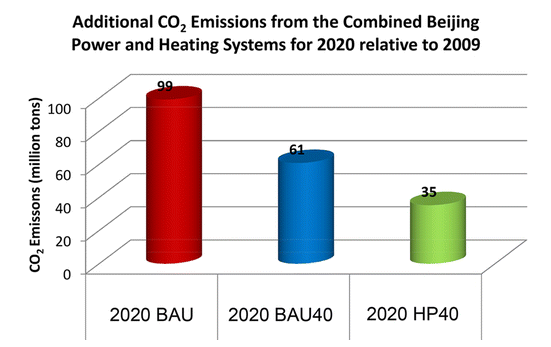A study led by China Project researchers CHEN Xinyu, LU Xi, and Project Chair Mike McELROY (Gilbert Butler Professor of Environmental Studies) investigates the prospects for using electrified space heating in Beijing as a form of energy storage, easing grid integration of renewable power and reducing carbon emissions and air pollution. The paper appears in Environmental Science & Technology.

Demands for electricity and energy to supply heat are expected to expand by 71% and 47%, respectively, for Beijing in 2020 relative to 2009. If the additional electricity and heat are supplied solely by coal as is the current situation, annual emissions of CO2 may be expected to increase by 59.6% or 99 million tons over this interval. Assessed against this business as usual (BAU) background, the present study indicates that significant reductions in emissions could be realized using wind-generated electricity to provide a source of heat, employed either with heat pumps or with electric thermal storage (ETS) devices. Relative to BAU, reductions in CO2 with heat pumps assuming 20% wind penetration could be as large as 48.5% and could be obtained at a cost for abatement of as little as $15.6 per ton of avoided CO2. Even greater reductions, 64.5%, could be realized at a wind penetration level of 40% but at a higher cost, $29.4 per ton. Costs for reduction of CO2 using ETS systems are significantly higher, reflecting the relatively low efficiency for conversion of coal to power to heat.

